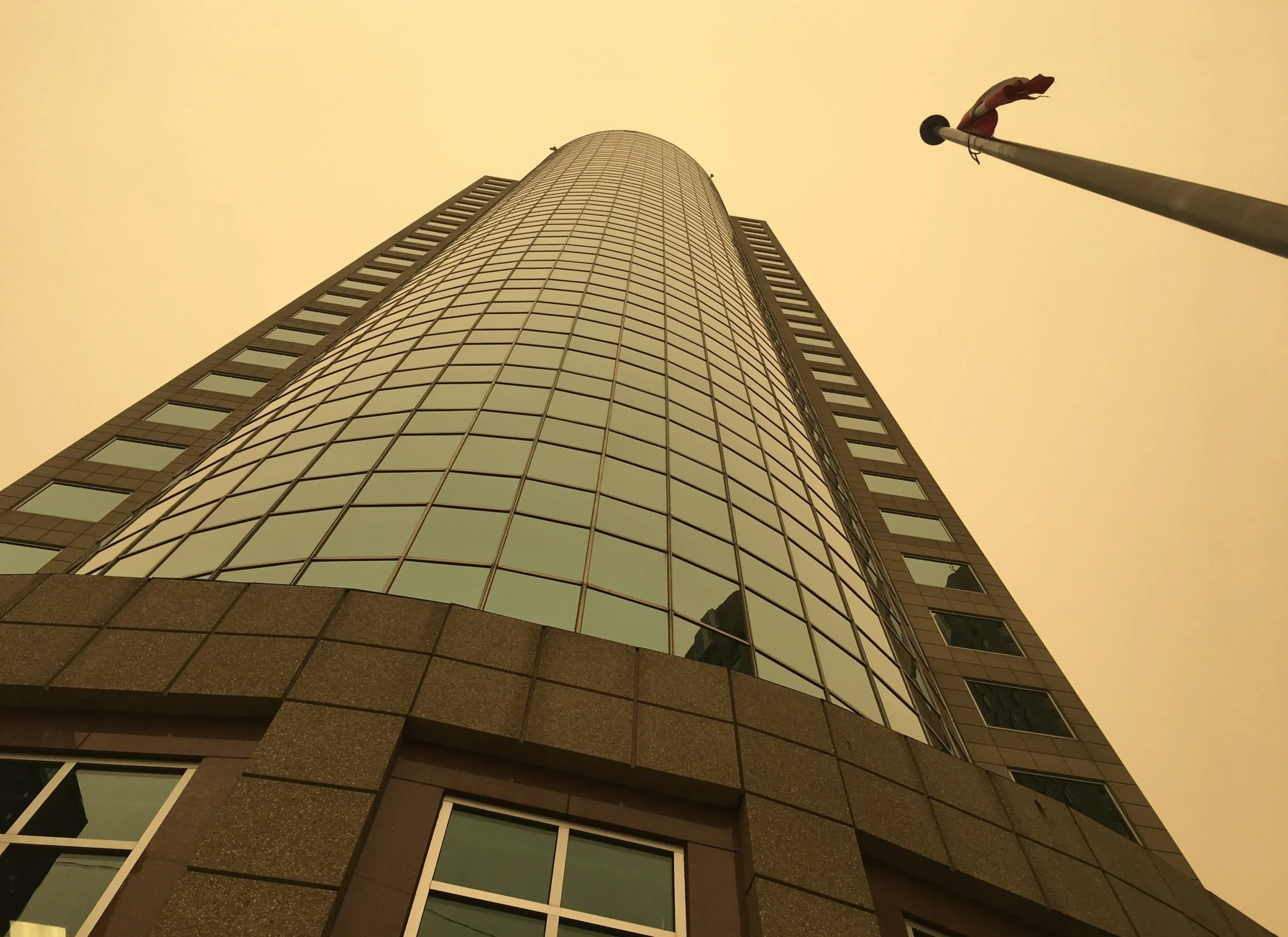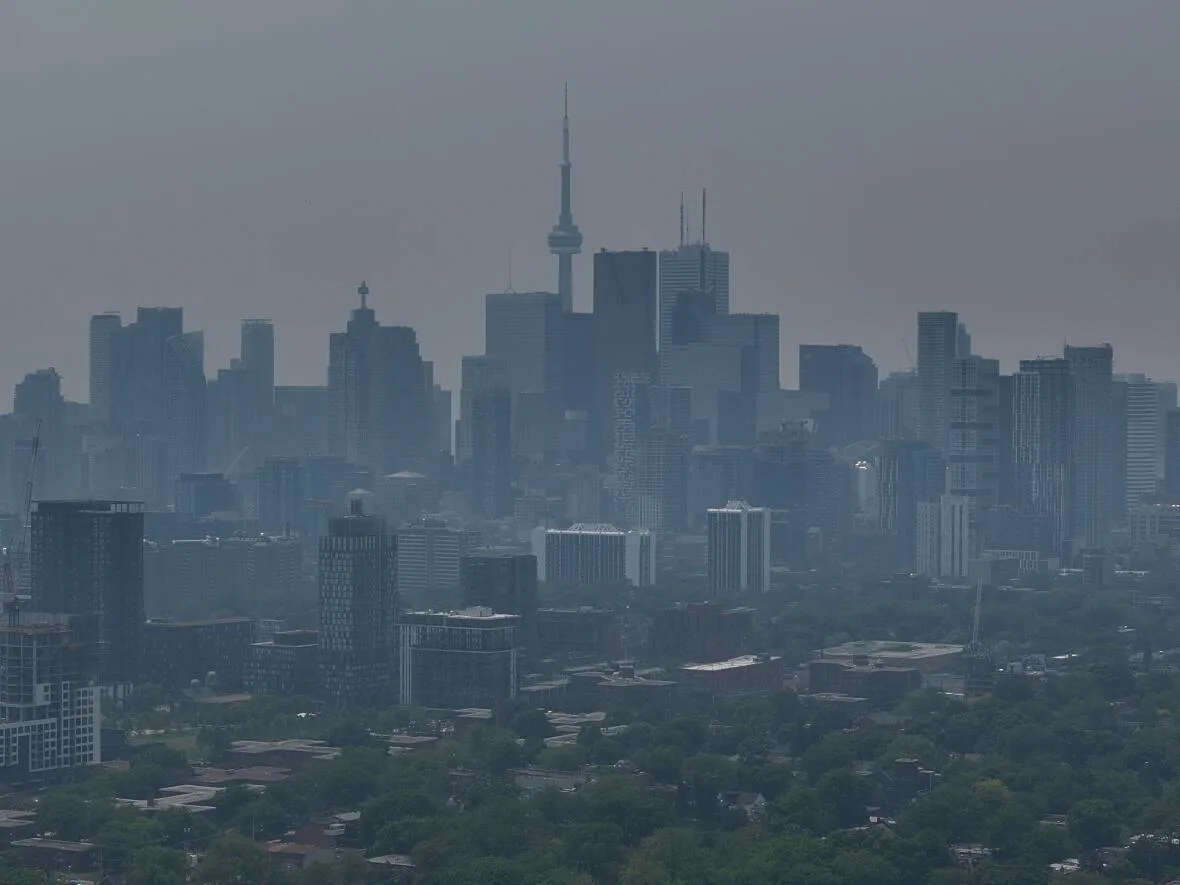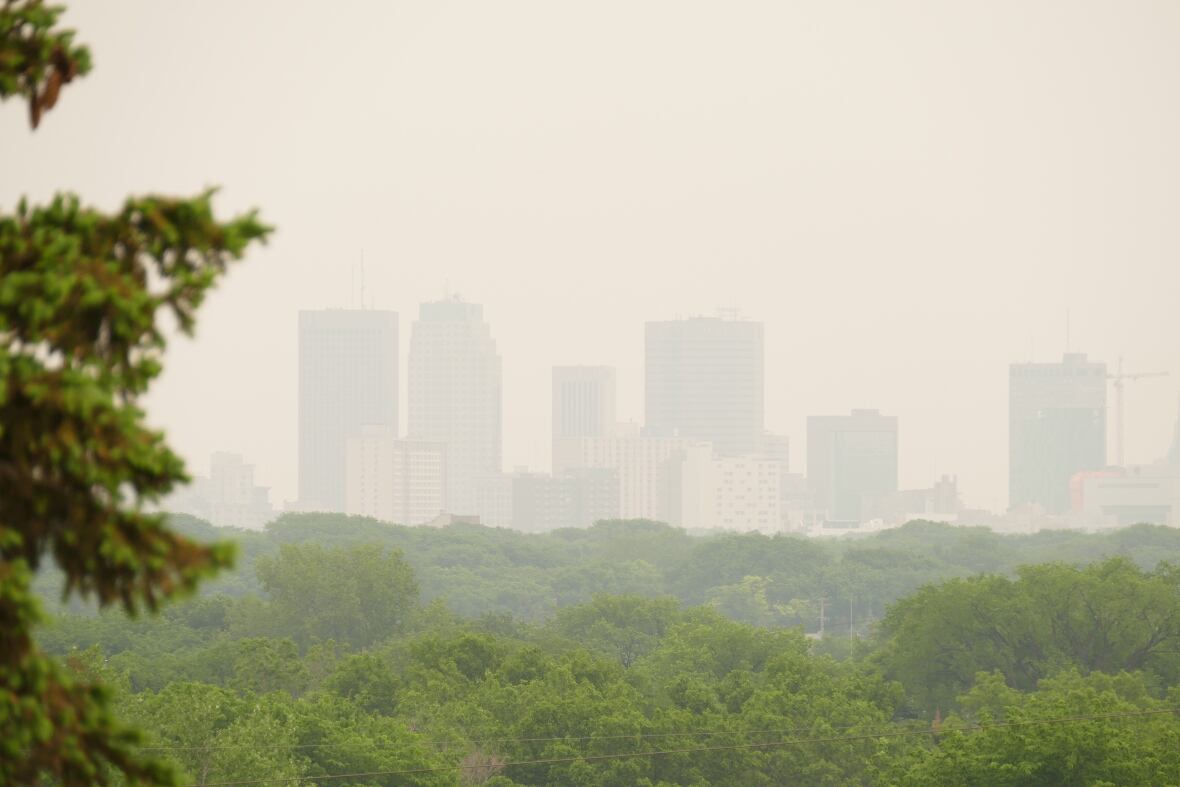This summer in Winnipeg has been weird. The sky looks brown and hazy instead of bright blue like it should. That’s just one of the hazards to Winnipeg people are facing right now.
If your eyes have been stinging and watery lately, there’s a big reason why. Winnipeg just broke a smoke record that’s been around since 1961. That’s over 60 years ago!
When the Air Becomes Your Enemy
“Over this past holiday weekend, we actually did surpass that previous record in both Winnipeg and Thompson for the smokiest year,” said Crawford Luke from Environment and Climate Change Canada. The city has logged over 306 smoke hours this summer alone, crushing the old 1961 record of 304 hours.
That hazy blanket covering the city isn’t just making for dramatic sunsets. It’s one of the biggest hazards to Winnipeg residents this year, especially for kids, seniors, and anyone with breathing problems.
The smoke’s coming from wildfires burning across Manitoba – and they’re not small campfires. Over 1.5 million hectares have burned across the province this year. To put that in perspective, that’s bigger than the entire province of Prince Edward Island.
Storms That Pack a Punch
But wildfire smoke isn’t the only thing Winnipeg folks need to watch out for. Recent weather alerts have been warning about severe thunderstorms that can bring golf ball-sized hail. These aren’t your typical summer showers.
“Conditions are favourable for the development of severe thunderstorms that may be capable of producing strong wind gusts, large hail and heavy rain,” Environment Canada warned recently. They’re talking about storms that can dump 50mm of rain in just one hour – that’s enough to turn streets into rivers.
These sudden downpours create another major hazard to Winnipeg: flash flooding. When that much water hits the pavement all at once, it doesn’t just make puddles. It can sweep cars away and turn familiar neighborhoods into dangerous zones.
The Heat’s Getting Real

Remember that scorching day in May when it hit 37°C? That wasn’t just uncomfortable – it broke a temperature record that had been standing for 125 years. Heat like that creates its own set of hazards to Winnipeg residents.
Heat exhaustion can sneak up on you faster than you’d think. You might feel dizzy, start sweating like crazy, or get nauseous. That’s your body’s way of saying “Hey, I need help here!” But heat stroke is the scary one – that’s when your body stops sweating altogether and your temperature shoots above 40°C. That’s when you call 911.
The city’s been dealing with what experts call “extreme heat conditions” more often, and it’s not just making air conditioners work overtime. It’s creating dangerous situations for anyone who has to work or play outside.
Winter’s Coming (And It’s Not Gentle)
Don’t think hazards to Winnipeg disappear when the snow starts flying. Manitoba winters can be brutal, with temperatures that make your face hurt just walking to the car.
Extreme cold weather brings its own dangers. Frostbite can happen in minutes when it’s really cold outside, and hypothermia doesn’t just affect people who fall through ice. It can happen to anyone who gets caught outside unprepared.
The city recommends dressing in three or more layers when it gets really cold, but sometimes even that’s not enough. During the worst cold snaps, officials basically say “Just don’t go outside unless you absolutely have to.”
The Air Quality Roller Coaster
Air quality has become one of the most unpredictable hazards to Winnipeg residents. One day it’s fine, the next day health officials are telling sensitive groups to stay indoors.
Wildfire smoke can travel thousands of kilometers. Fires burning way up north can make breathing difficult for someone living in the city. Kids, pregnant women, and anyone with heart or lung problems feel it first and worst.
The city tracks air quality using something called the Air Quality Health Index. When it jumps up, that’s when you know it’s time to maybe skip that outdoor workout and stay inside with the windows closed.
When Mother Nature Doubles Down
Here’s what makes these hazards to Winnipeg even trickier – they don’t always come one at a time. Imagine dealing with extreme heat AND poor air quality from wildfire smoke at the same time. Or getting hit with a severe thunderstorm when the ground’s already bone dry from drought conditions.
Manitoba declared not one, but two states of emergency this year because of wildfires. The first one came in May, and then they had to declare another one in July when a second wave of fires hit.
“This is the largest evacuation Manitoba will have seen in most people’s living memory,” said Premier Wab Kinew back in May when thousands of people had to leave their homes.
The New Reality

Climate experts say Canadians need to get used to summers with more smoke, more extreme weather, and more unpredictable conditions.
“This is not going to go away. This is for the rest of the century, throughout our lifetimes we are going to be experiencing this,” one researcher explained.
That doesn’t mean people are helpless against these hazards to Winnipeg, though. The city’s emergency management team works around the clock to monitor conditions and issue warnings when things get dangerous.
What’s Being Done
The good news is that Winnipeg isn’t just sitting around waiting for the next disaster. The city’s Office of Emergency Management keeps tabs on all these different hazards to Winnipeg and coordinates responses when things get serious.
They work with Environment Canada to get weather warnings out fast. They track air quality in real-time. They have plans for everything from heat waves to ice storms to chemical spills.
When wildfires threaten communities up north, Winnipeg often becomes a safe haven for evacuees. Hotels fill up, community centers open their doors, and ordinary Winnipeggers step up to help their neighbors.
Staying One Step Ahead
The key to dealing with these hazards to Winnipeg is staying informed and prepared. Download weather apps that send alerts. Know the signs of heat exhaustion. Have an emergency kit ready.
Most importantly, don’t ignore the warnings. When Environment Canada issues a severe weather watch, they’re not being dramatic. When health officials say the air quality’s bad, they mean it.
Living in Winnipeg means dealing with some pretty intense weather and environmental challenges. But it also means being part of a community that knows how to look out for each other when things get tough.
The hazards to Winnipeg residents are real and they’re changing. But with the right information and preparation, people can stay safe while the scientists and emergency management folks work on the bigger picture solutions.
